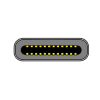2
High Trust ProductsChargers and Power Banks
Headphone & Speakers
Cases & Covers
Virtual Reality
Cables & Adapters
Media Player
Laptop
Tablet
Desktop
Cell Phone
Printers & Copiers
Memory Cards
TV
Computer Display
Game Console
Smart Home
Wearable Technology
Photo & Video Camera
Car Electronics
Car
Networking Equipment
Smart Toys
Home Audio & Video
Professional & Industrial
Storage Drive
Docking Station
Game Console Controllers
Set-top box
Keyboard, Mice, & Stylus
Portable Music Player
Computer Parts & Components
Cordless & Speakerphones
Projector
Software
Reporting
V30
by LG









Interested in this product?

Select a product category to see which devices type we recommend to use with the V30:
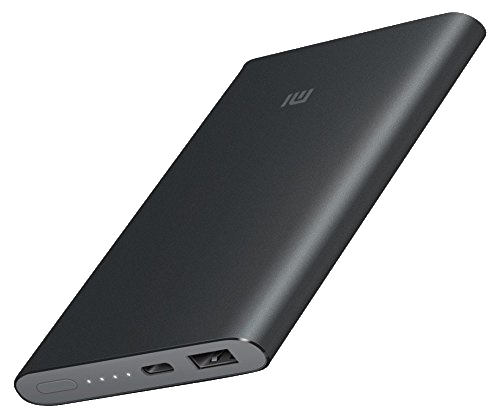
LG V30- Qualcomm Quick Charge 4+ Phone Supporting USB Power Delivery 3.0, PPS and DisplayPort
The LG V30 was one of the first few phones offering Qualcomm Quick Charge 4+ rapid charging, alongside other phones such as the Razer Phone, Xiaomi Mi 6, and ZTE Nubia Z17. The LG V30 has relatively solid specs despite the emergence of newer and more popular models like the LG G7 ThinQ later on. Like the LG G7 ThinQ, the LG V30 can use Qualcomm Quick Charge 4+ which includes USB Power Delivery 3.0, PPS (Programmable Power Supply), and Qualcomm Quick Charge 3.0 technology over USB Type-C. This allows the LG V30 to be charged quickly using either a Quick Charge 3 charger, new Quick Charge 4 charger, or USB Power Delivery based charger.
The LG V30 still continues to support Qi wireless charging technology since it was first introduced in the LG G5 and LG G6. The chipset that the LG V30 runs on is the older Qualcomm MSM8998 Snapdragon 835 along with Android 7.1.2 (Nougat) and Adreno 540 GPU, given the phone was an earlier 2017 release. Compared to the newer LG G7 ThinQ, there are some differences in design such as buttons and camera positioning, OLED display on the LG V30 vs a LCD screen on the LG G7 ThinQ, as well as the LG G7 ThinQ having a better camera. The LG V30 can take advantage of DisplayPort video despite the lack of it on the LG G7 ThinQ.
Here's a closer look of the LG V30 as we unpacked the phone from its box.
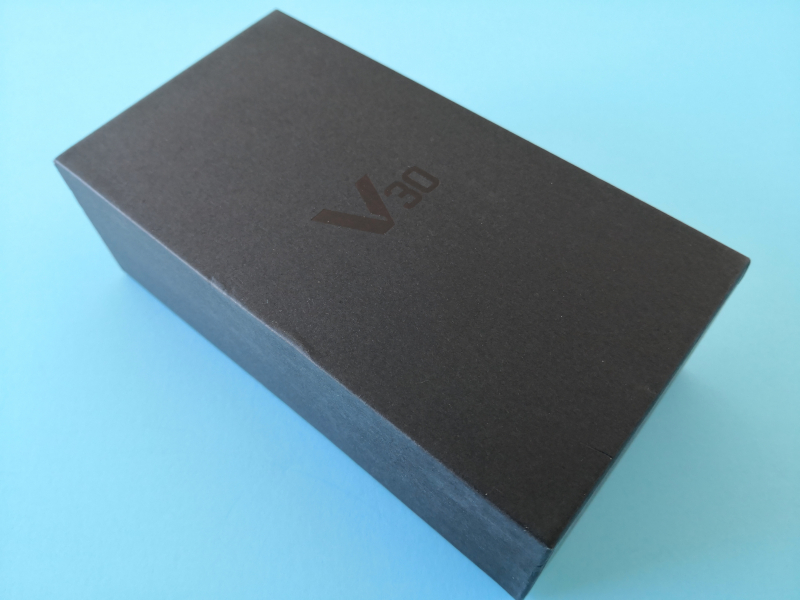

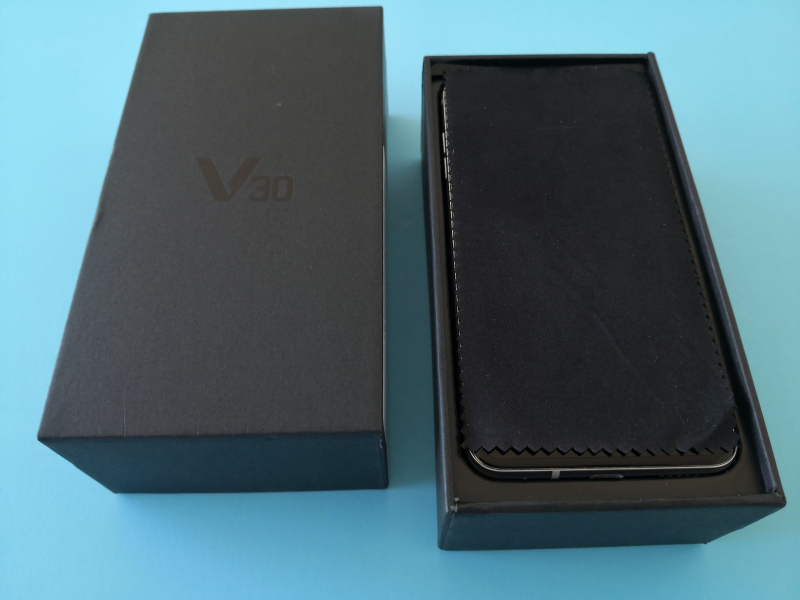

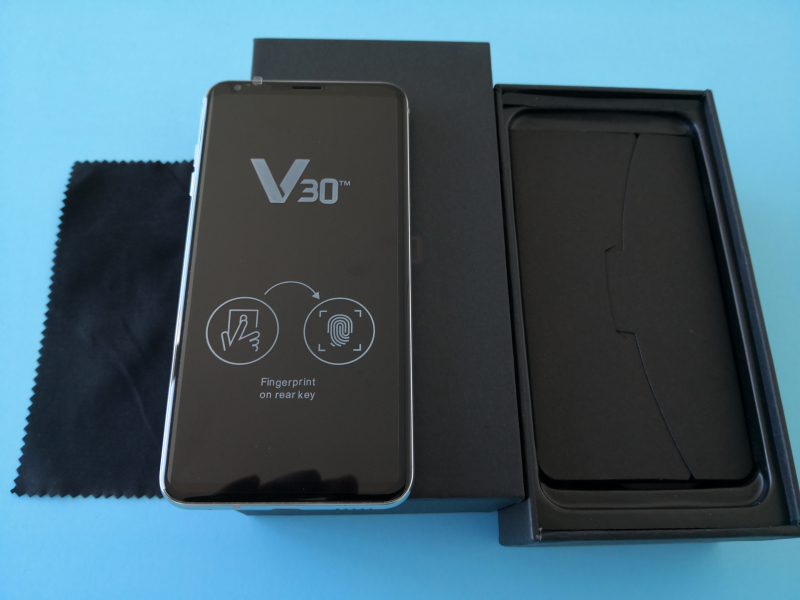
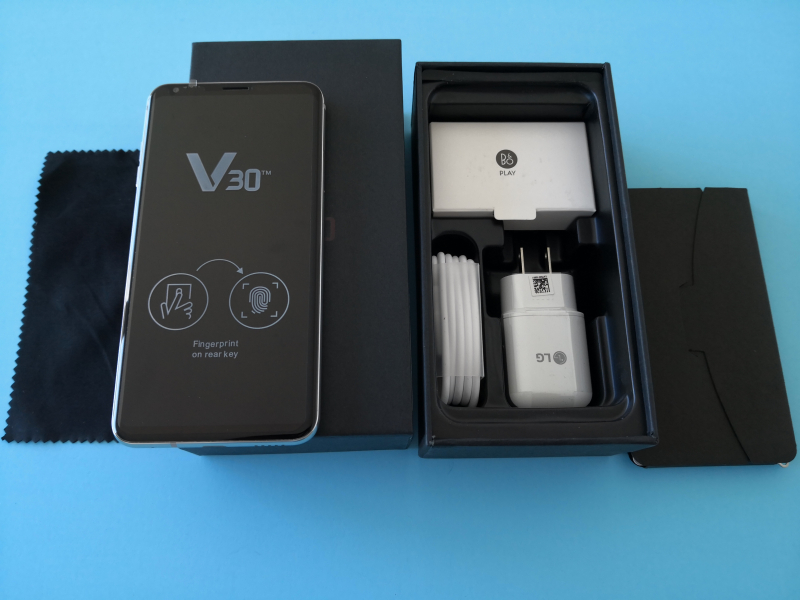
.The LG V30 comes with similar accessories as the LG G7 ThinQ that include a LG branded Qualcomm Quick Charge 3.0 charger, a USB Type-C to Type-A cable, 3.5mm audio headphones, replacement earbuds, and documentation.
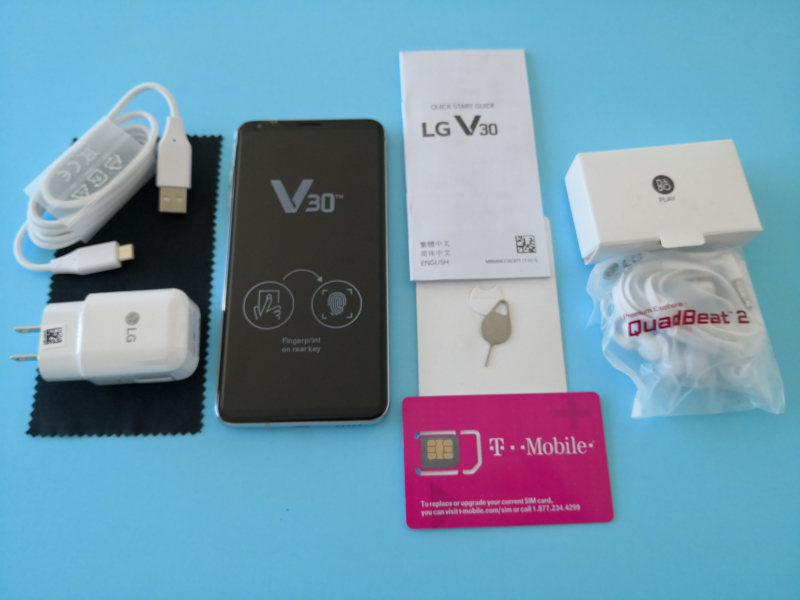
The USB Type-A based Qualcomm Quick Charge 3.0 charger is labeled to support 9 watts (5 volts @ 1.8 amps) and 16.2 watts (9 volts @ 1.8 amps) output power.
The LG V30 declares that it can support 27 watts charging at 5V, 9V, and 12V voltage rails, although in practice we've only seen a max of sustained 12 watts charging through Qualcomm Quick Charge.
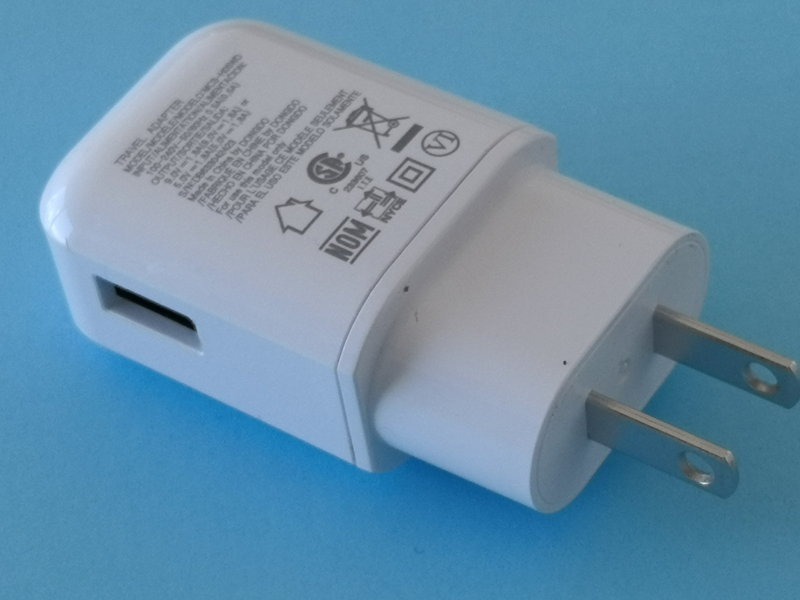
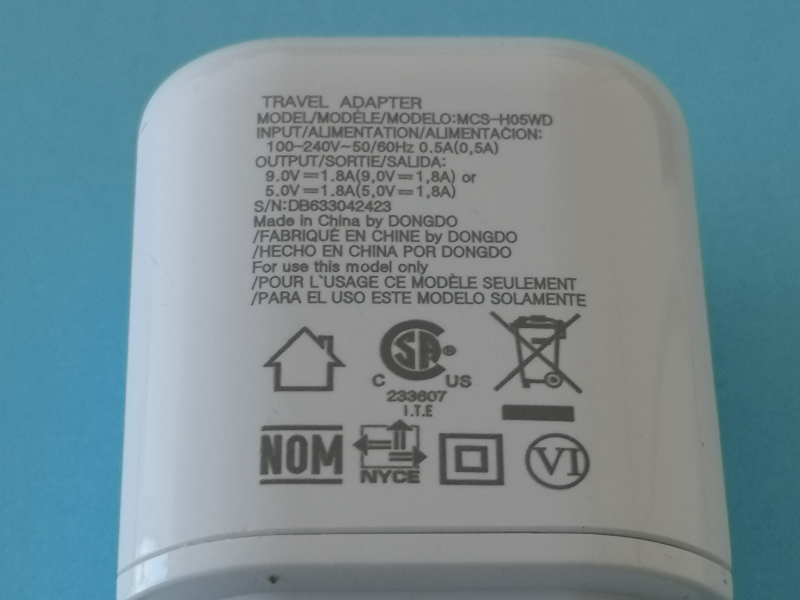
The LG V30 has two 16MP and 13MP cameras as well as a fingerprint sensor on the back of the phone.

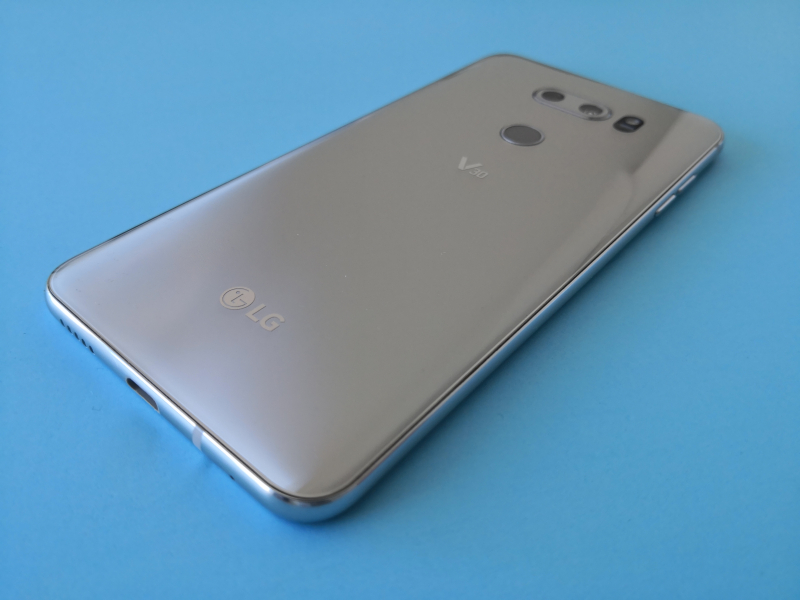
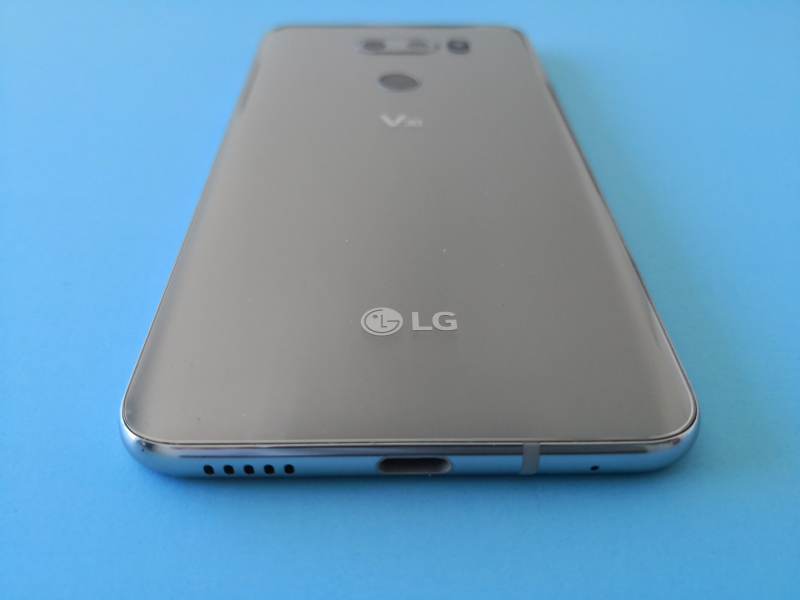
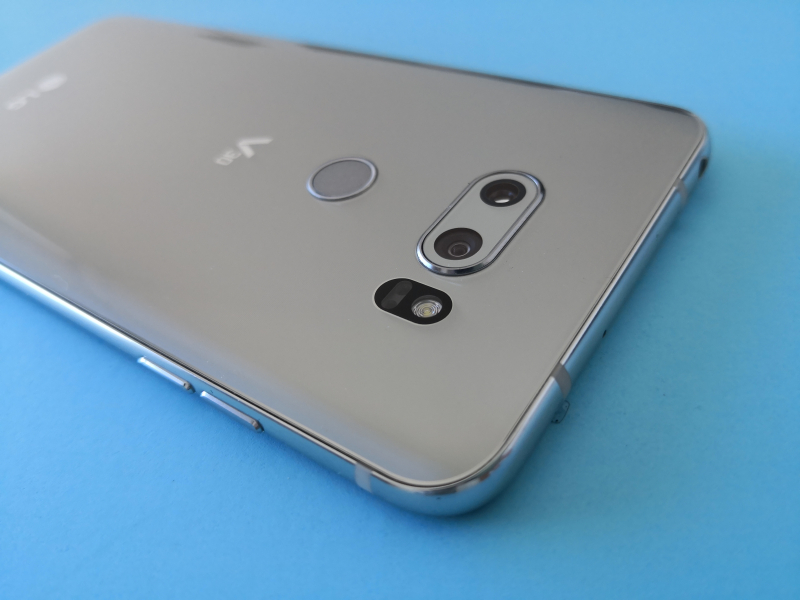
The LG V30 also provides the same 3.5mm headphone jack as the LG G7 ThinQ.

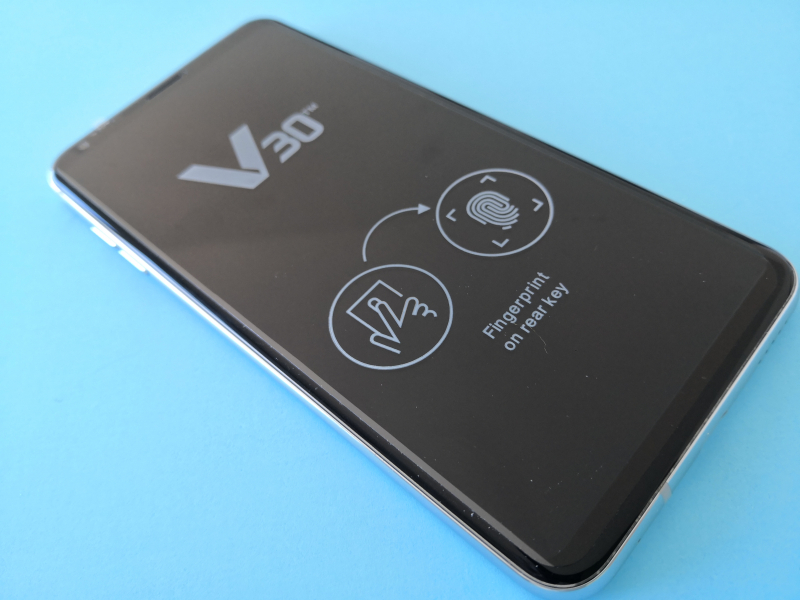
The LG V30 supports a P-OLED 1440 x 2880 pixels touch screen with Corning Gorilla Glass 5, HDR 10, and Dolby Vision.

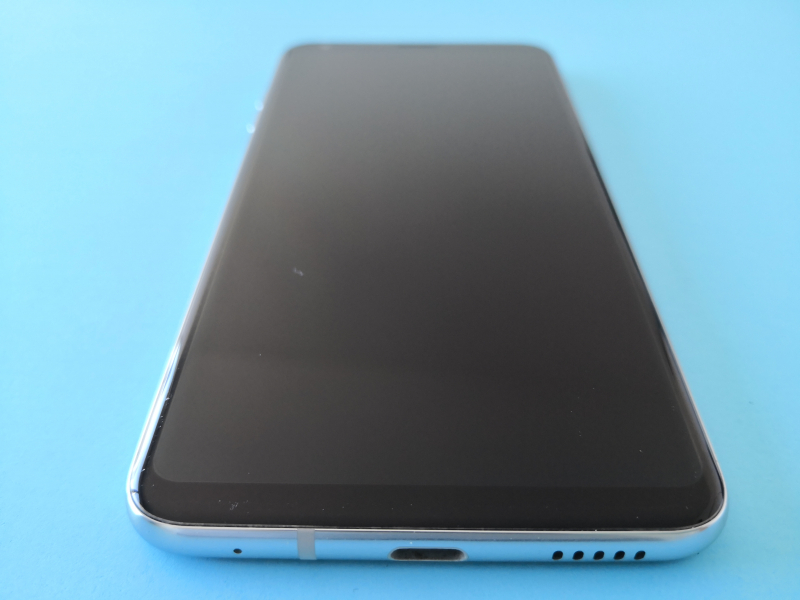

Using the USB Power Test App from Granite River Labs with the Granite River Labs USB Power Delivery Compliance C2 Tester, we performed the following tests for the LG V30 to determine its power capabilities.
The USB Power Test App first negotiates a power contract emulating the Source to determine the Power Delivery Sink capabilities of the LG V30. The USB Power Test App then reports out the voltage and current supported by the LG phone for each of the Source PDO's advertised to the phone.
| Sink Cap. | Voltage (V) | Current (A) |
|---|---|---|
| 5V | 5.1 | 0.66 |
| 6V | 5.07 | 0.57 |
| 7V | 5.07 | 0.66 |
| 8V | 5.1 | 0.54 |
| 9V | 5.08 | 0.55 |
| 10V | 5.05 | 0.57 |
| 11V | 5.1 | 0.56 |
| 12V | 5.1 | 0.54 |
| 13V | 5.07 | 0.56 |
| 14V | 5.08 | 0.54 |
| 15V | 5.05 | 0.55 |
| 16V | 5.09 | 0.55 |
| 17V | 5.1 | 0.52 |
| 18V | 5.07 | 0.55 |
| 19V | 5.11 | 0.57 |
| 20V | 5.08 | 0.56 |
The USB Power Test App from Granite River Labs also produces a voltage, current trace plot which graphically shows the voltage and current requested by the phone for each advertised Source PDO throughout the power negotiation.
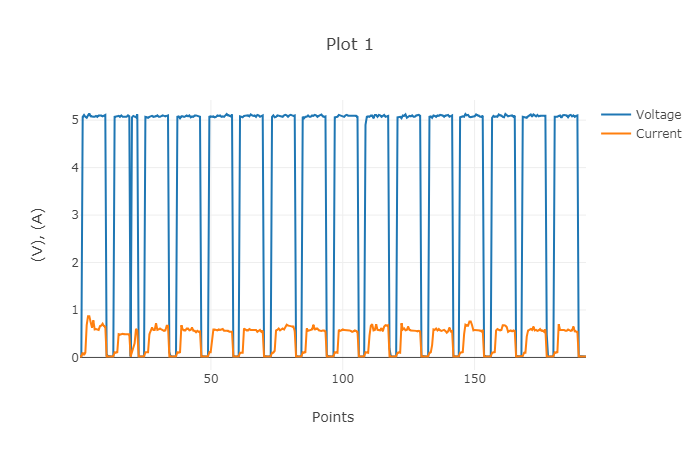
Using the USB Power Delivery Compliance C2 Tester from Granite River Labs to run just a subset of the full USB Power Delivery compliance test suite, we can see that the LG V30 supports fixed PDO's of 7.5 watts (5 volts @ 1.5 amps), 15 watts (5 volts @ 3 amps), 27 watts (9 volts @ 3 amps) and 27 watts (12 volts @ 2.25 amps) for charging. Many compliance failures were also observed so just be extra careful when using this phone.
Power Capabilities
Parameter
|
GetCapabilities
|
|---|---|
PD_POWER_AS_SOURCE
|
7500
|
NUM_SRC_PDOS
|
1
|
Supply Type #1
|
Fixed
|
Peak Current #1
|
0x0(A)
|
Voltage #1
|
0x64(5V)
|
Max Current #1
|
0x96(1.5A)
|
PD_POWER_AS_SINK
|
27000
|
NUM_SNK_PDOS
|
3
|
Supply Type #1
|
Fixed
|
Voltage #1
|
0x64(5V)
|
OP Current #1
|
0x12C(3A)
|
Supply Type #2
|
Fixed
|
Voltage #2
|
0xB4(9V)
|
OP Current #2
|
0x12C(3A)
|
Supply Type #3
|
Fixed
|
Voltage #3
|
0xF0(12V)
|
OP Current #3
|
0xE1(2.25A)
|
USB-IF High Level Mapping Summary
Sl No
|
Test Category
|
Test Group Description
|
Test Result
|
|---|---|---|---|
1
|
PHY_PRIMARY_TX
|
BMC Physical Layer Transmitter
|
PASS
|
2
|
PHY_PRIMARY_RX
|
BMC Physical Layer Receiver
|
FAIL
|
3
|
PHY_PRIMARY_MISC
|
BMC Physical Layer Miscellaneous
|
PASS
|
4
|
PROT_PRIMARY
|
Protocol Specific Primary
|
FAIL
|
5
|
POWER_PRIMARY
|
Power Source/Sink Primary
|
FAIL
|
Result Summary
Sl No
|
Test ID
|
Test Name
|
Test Result
|
|---|---|---|---|
1
|
TDA.2.1.1.1
|
TDA.2.1.1.1 BMC PHY TX EYE
|
PASS
|
2
|
TDA.2.1.1.2
|
TDA.2.1.1.2 BMC PHY TX BIT
|
PASS
|
3
|
TDA.2.1.2.2
|
TDA.2.1.2.2 BMC PHY RX INT REJ
|
FAIL
|
4
|
TDA.2.1.2.1
|
TDA.2.1.2.1 BMC PHY RX BUSIDL
|
PASS
|
5
|
TDA.2.1.3.1
|
TDA.2.1.3.1 BMC PHY TERM
|
PASS
|
7
|
TDA.2.2.1
|
TDA.2.2.1 BMC PROT SEQ GETCAPS
|
PASS
|
8
|
TDA.2.2.2.1
|
TDA.2.2.2.1 BMC PROT SEQ CHKCAP P PC
|
PASS
|
9
|
TDA.2.2.2.2
|
TDA.2.2.2.2 BMC PROT SEQ CHKCAP NOMARK P PC
|
PASS
|
10
|
TDA.2.2.2.3
|
TDA.2.2.2.3 BMC PROT SEQ CHKCAP CP ACC
|
FAIL
|
11
|
TDA.2.2.2.4
|
TDA.2.2.2.4 BMC PROT SEQ CHKCAP NOMRK CP ACC
|
FAIL
|
16
|
TDA.2.2.7
|
TDA.2.2.7 BMC PROT BIST NOT 5V SRC
|
PASS
|
18
|
TDA.2.2.9
|
TDA.2.2.9 BMC PROT GSC REC
|
PASS
|
19
|
TDA.2.2.10
|
TDA.2.2.10 BMC PROT IGN PPS
|
PASS
|
20
|
TDA.2.3.1.1
|
TDA.2.3.1.1 POW SRC LOAD P PC
|
FAIL
|
21
|
TDA.2.3.1.2
|
TDA.2.3.1.2 POW SRC LOAD CP ACC
|
FAIL
|
22
|
TDA.2.3.2.1
|
TDA.2.3.2.1 POW SRC TRANS P PC
|
PASS
|
24
|
TDA.2.3.3.1
|
TDA.2.3.3.1 POW SNK TRANS C CP
|
FAIL
|
BMC Eye Diagram
View Full Article
Featured Products
 GTrusted
GTrusted










